25Apr
Lesson Plan > Lesson 42 > English
Lesson 42 covers:
- Elementary Level: Adjectives (Describing Words)
- Mid Level: Reading Comprehension (Inference)
- High Level: Reading Comprehension (Inference and Prediction)
Elementary Level (Kinder to Grade 2)
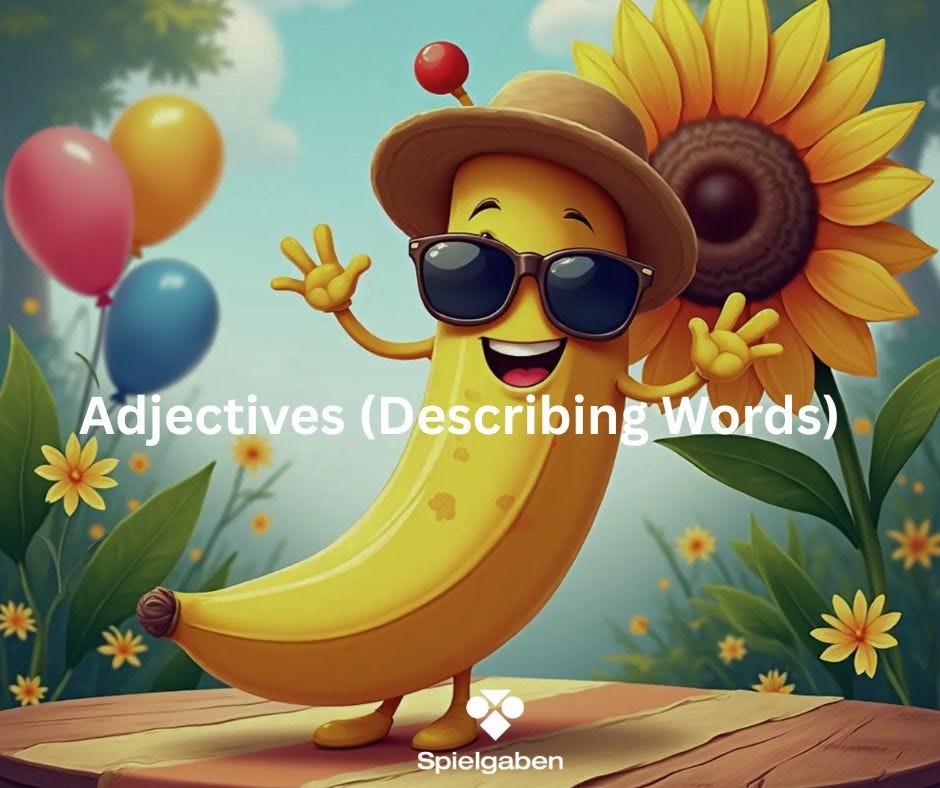
Subject: Adjectives (Describing Words)
Alignment with Standards:
- CCSS.ELA-LITERACY.L.1.1.F – Use frequently occurring adjectives.
- CCSS.ELA-LITERACY.L.1.5.B – Define words by category and by one or more key attributes (e.g., a duck is a bird that swims; a tiger is a large cat with stripes).
Lesson Objectives:
By the end of the lesson, the student will be able to:
- Define an adjective as a word that describes a noun.
- Identify adjectives in sentences and real-world objects.
- Use adjectives to describe objects or pictures orally and in writing.
Materials Needed:
- Printed pictures (e.g., a big red apple, a fluffy white cat, a shiny blue car)
- Flashcards with adjectives (e.g., big, small, happy, sad, round, soft)
- Whiteboard & markers (or paper & crayons)
- Worksheet (optional – matching adjectives to pictures)
- Everyday objects (e.g., a soft teddy bear, a smooth rock, a crunchy cracker)
Lesson Activities:
1. Warm-Up (5 minutes)
- Show the student an object (e.g., a yellow banana) and ask:
- “What color is this banana?” (Yellow)
- “Is it big or small?” (Small)
- “Is it sweet or sour?” (Sweet)
- Explain: “Words like yellow, small, and sweet are called adjectives—they describe things!”
2. Direct Instruction (10 minutes)
- Define Adjectives:
- “Adjectives are words that describe nouns (people, places, or things).”
- Examples:
- “The fluffy cat” (fluffy describes the cat)
- “The tall tree” (tall describes the tree)
- Practice Together:
- Show a picture (e.g., a happy dog) and ask: “What words can we use to describe this dog?”
- Write the adjectives on the board (e.g., happy, brown, furry).
3. Guided Practice (10 minutes)
- Adjective Hunt:
- Give the student 3 objects (e.g., a smooth stone, a soft blanket, a round ball).
- Ask: “What words can you use to describe each one?”
- Picture Prompt Activity:
- Show an image (e.g., a bright sun, a tiny ladybug, a loud drum).
- Have the student describe it using at least 2 adjectives.
4. Independent Practice (10 minutes)
- Worksheet or Drawing Activity:
- Option 1: Circle the Adjective (e.g., “The red apple” – circle red).
- Option 2: Draw & Describe – The student draws a picture and writes 2 adjectives to describe it.
5. Wrap-Up (5 minutes)
- Review: “What is an adjective? Can you describe your favorite toy?”
- Game: Play “Adjective Charades”—act out an adjective (e.g., sleepy, fast, loud) and have the student guess.
Assessment & Follow-Up:
- Oral: Can the student describe objects using adjectives?
- Written: Can they write simple sentences with adjectives (e.g., “The green frog jumps”)?
- Extension Activity: Read a simple book (e.g., “Brown Bear, Brown Bear, What Do You See?”) and identify adjectives.
Mid Level (Grade 3 to 5)

Subject: Reading Comprehension (Inference)
Alignment with Standards:
- CCSS.ELA-LITERACY.RL.4.1 – Refer to details and examples in a text when explaining what the text says explicitly and when drawing inferences.
- CCSS.ELA-LITERACY.RL.4.3 – Describe in depth a character, setting, or event in a story, drawing on specific details in the text.
Lesson Objectives:
By the end of the lesson, the student will be able to:
- Define inference as using clues from a text + background knowledge to figure out what the author implies.
- Practice making inferences from short passages, pictures, and real-world scenarios.
- Support inferences with textual evidence (e.g., “I think __ because __”).
Materials Needed:
- Short mystery passages (1-2 paragraphs with implied meaning)
- Inference riddles (e.g., “I’m full of keys but can’t open locks. What am I?”)
- Graphic organizer (Two-column chart: Clues from Text | My Inference)
- Highlighters or sticky notes (for marking clues in text)
- Whiteboard & markers (or digital equivalent)
Lesson Activities:
1. Warm-Up (10 minutes) – “What’s Happening Here?”
- Show an image prompt (e.g., a person wearing a coat, scarf, and mittens while holding a cup of steaming cocoa).
- Ask:
- “What do you see?” (List observations.)
- “What can you infer? Is it warm or cold outside? How do you know?”
- Explain: “Inferencing is like being a detective—we use clues + what we already know to figure out hidden meanings!”
2. Direct Instruction (10 minutes) – “What is an Inference?”
- Define Inference:
- “An inference is an educated guess based on evidence (text/picture clues) + prior knowledge.”
- Example:
- Read aloud: “Emma’s eyes were red, and she kept sniffling. She held a crumpled tissue.”
- Ask: “Is Emma happy or sad? How do you know?”
- Model: “I infer Emma is sad because red eyes and tissues often mean someone was crying.”
3. Guided Practice (15 minutes) – Text Detective Activity
- Short Passage Analysis:
- Provide a paragraph (e.g., “The campfire crackled. Jake shivered and pulled his blanket tighter. An owl hooted in the distance.”).
- Student fills out a graphic organizer:
- Clues from Text | My Inference
(e.g., “shivered, blanket” → “It’s cold at night.”)
- Clues from Text | My Inference
- Inference Riddles:
- Solve 2-3 riddles (e.g., “I have a spine but no bones. What am I?” [Answer: A book]).
4. Independent Practice (15 minutes) – “Prove It!”
- Option 1: Read a short story (e.g., “Lena’s muddy shoes sat by the door. Her dog wagged its tail, panting.”).
- Write 2 inferences (e.g., “Lena took her dog for a walk in the rain.”).
- Option 2: Analyze a picture prompt (e.g., a broken vase with a cat nearby).
- Write a sentence inferring what happened (e.g., “The cat knocked over the vase.”).
5. Wrap-Up (10 minutes) – Share & Reflect
- Discussion: “What was the hardest part of making inferences? How do clues help?”
- Exit Ticket:
- Student writes one inference from their independent practice and explains their reasoning.
Assessment & Differentiation:
- Beginning: Provide sentence stems (“I think ___ because ___.”).
- Advanced: Have the student write a short mystery paragraph for someone else to infer.
- Real-World Connection: Practice inferring moods from emojis or song lyrics.
High Level (Grade 6 to 8)
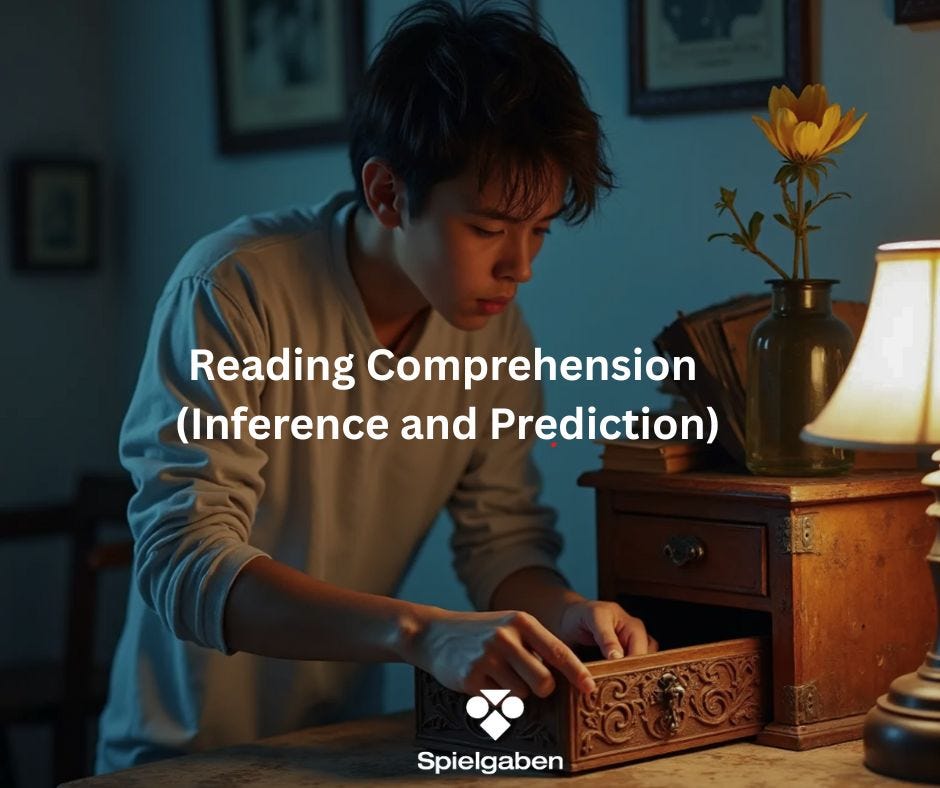
Subject: Reading Comprehension (Inference and Prediction)
Alignment with Standards:
- CCSS.ELA-LITERACY.RL.7.1 – Cite textual evidence to support analysis of what the text says explicitly and implicitly.
- CCSS.ELA-LITERACY.RL.7.3 – Analyze how particular elements of a story interact (e.g., how setting shapes the characters or plot).
- CCSS.ELA-LITERACY.RL.7.10 – Read and comprehend literature at the 7th-grade level.
Lesson Objectives:
By the end of the lesson, the student will be able to:
- Define inferences and predictions and explain their differences.
- Make logical inferences based on textual evidence.
- Predict future events in a text using clues and prior knowledge.
- Justify reasoning using the “It Says… I Say… And So…” strategy.
Materials Needed:
- Short story or passage (e.g., a suspenseful excerpt from a novel or a mystery short story)
- Graphic organizer (for recording inferences and predictions)
- Highlighters or sticky notes (for annotating text)
- Whiteboard & markers (or digital equivalent)
- Inference & Prediction Task Cards (optional)
Lesson Activities:
1. Warm-Up (10 min) – “What’s the Difference?”
- Show two scenarios:
- “A character is packing a suitcase, looking at a flight ticket.” → Prediction: “They are going on a trip.”
- “A character sighs and tears up while reading a letter.” → Inference: “They received sad news.”
- Discuss:
- Inference = Figuring out hidden meanings now (clues + background knowledge).
- Prediction = Guessing what will happen later (based on patterns/foreshadowing).
2. Direct Instruction (15 min) – “It Says… I Say… And So…”
- Model with a short passage (e.g., a mystery scene):
- “It Says…” (Text evidence) → “The lights flickered, and the door creaked open.”
- “I Say…” (Prior knowledge) → “Flickering lights and creaking doors often mean danger.”
- “And So…” (Inference) → “I infer something scary is about to happen.”
- Practice Together: Read another passage and fill out a graphic organizer.
3. Guided Practice (20 min) – Text Analysis & Prediction
- Activity 1: Inference Detective
- Read a suspenseful passage (e.g., from “The Landlady” by Roald Dahl).
- Highlight clues and write inferences (e.g., “Why does the landlady seem suspicious?”).
- Activity 2: Predicting the Plot
- Stop reading midway and predict:
- “What will happen next? What clues support your guess?”
- Stop reading midway and predict:
4. Independent Practice (10 min) – Writing & Justifying
- Option 1: Write a short alternate ending to a story, explaining predictions.
- Option 2: Analyze an image prompt (e.g., a shadowy figure at a door) and write:
- 1 inference (“The person is hiding.”)
- 1 prediction (“Someone will discover them.”)
5. Wrap-Up (5 min) – Exit Ticket
- Question: “How do inferences and predictions help you understand stories better?”
- Share: One inference or prediction from today’s lesson.
Assessment & Differentiation:
- Struggling Learners: Provide sentence stems (“I think ___ because ___”).
- Advanced Learners: Have them write a mystery scene with intentional clues for others to infer.
- Real-World Connection: Apply skills to movie trailers (predict plot twists).



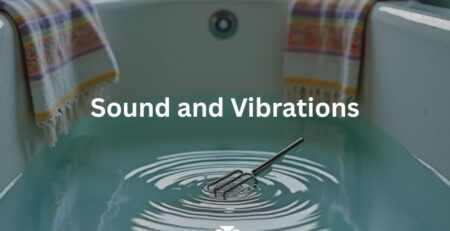
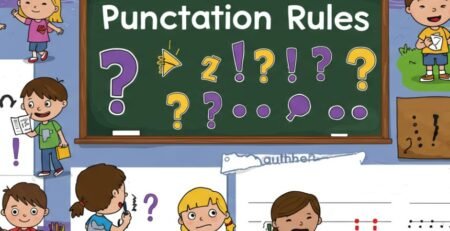
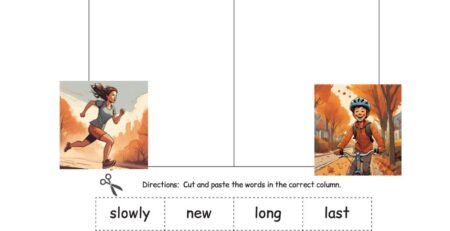
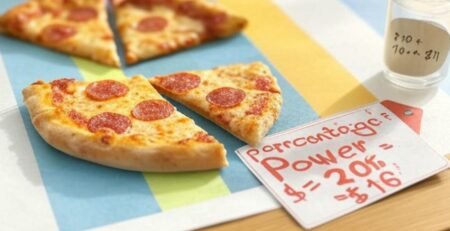

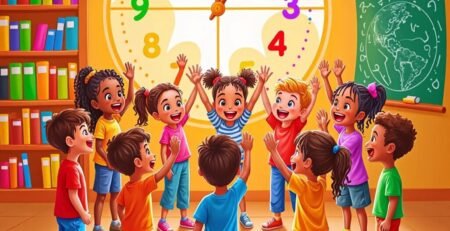

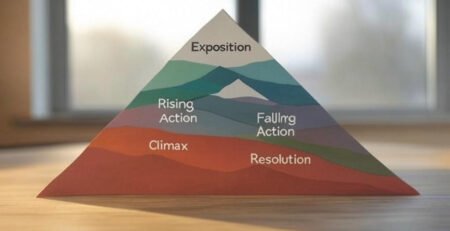

LEAVE A COMMENT